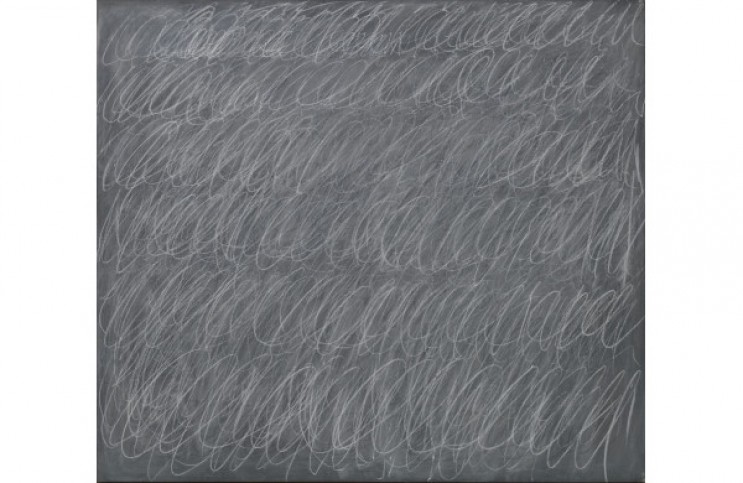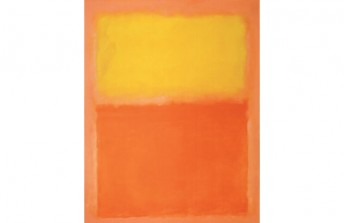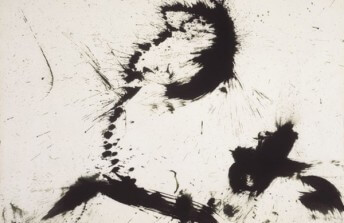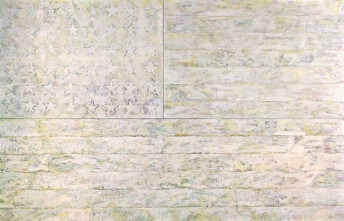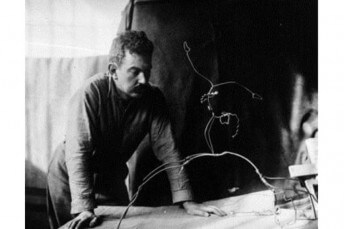The Abstract Art Inside the Schulhof Collection
Feb 18, 2019
When Hannelore B. Schulhof died in 2012, she bequeathed eighty works of art to the Solomon R. Guggenheim Foundation, with the instruction that they be held in the Peggy Guggenheim Collection in Venice. Now, for the first time, the Schulhof Collection is on view at that institution, through 18 March 2019. The collection represents a lifetime of effort by Hannelore and her husband Rudolph, who earned a reputation amongst dealers, collectors, and the artists themselves as true art lovers of superior instinct and judgment. Hannelore was born in Germany in 1922. Rudolph was born in Czechoslovakia in 1912. The couple married in Brussels shortly before the outbreak of World War II then moved to New York in 1940 and became American citizens. It was in America that the Schulhofs began collecting art. Unlike most of their peers, they focused their collection entirely on living artists. They bought from artists in both Europe and the United States, and had no biases against style, medium, method, nor subject matter. They based their choices entirely on their own wide and varied sense of taste, and their belief that the work had to be relevant to its time. The collection they eventually amassed is extraordinary. Though they never could have known at the time how history would judge the works they bought, they ended up assembling a collection that highlights dozens of the most influential artists of the 20th Century. Without attempting to highlight any particular movements, they managed to put together works that offer a virtual timeline of aesthetic evolutions as they transpired from the 1940s through the 1980s. Titled FROM GESTURE TO FORM: Postwar European and American Art from the Schulhof Collection, the current Guggenheim Venice exhibition includes almost the entire Schulhof Collection. These rarely seen works not only offer a unique viewpoint on the history of Post War Western art, they also offer what essentially amounts to a masters class on the underappreciated art of collecting art.
Diversity in Abstraction
One of the most instantly recognizable facts about the Schulhof Collection is that the works are almost entirely abstract. Yet despite this broadly generalized description, the diversity of styles, techniques, mediums, and methods covered by the collection is extraordinary. As the Guggenheim Venice exhibition makes clear through its curation, which is divided into 11 distinct sections, the collection celebrates the diversity of Post War abstract art by spotlighting a vast assortment of unique visual languages. The Schulhofs began their journey by collecting the works of the Abstract Expressionists. Even within this somewhat unified group, they collected artists with highly individualized approaches, such as Robert Motherwell, Joan Mitchell, and Mark Rothko. Next, they moved on to artists like Cy Twombly, Mark Tobey, and Jasper John, who focused not on expressionistic abstraction, but on the transcendent qualities of repetitive marks, gestures, and signs.
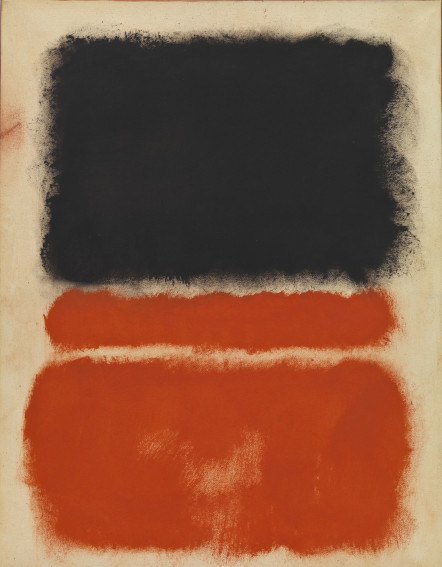
Mark Rothko - Untitled (Red), 1968. Acrylic on paper, mounted on canvas. 83.8 x 65.4 cm. Solomon R. Guggenheim Foundation, New York, Hannelore B. and Rudolph B. Schulhof Collection, bequest of Hannelore B. Schulhof, 2012. © 1998 Kate Rothko Prizel & Christopher Rothko / ARS, New York, by SIAE 2019
Throughout the 1950s and 60s, the Schulhofs focused a great deal of attention on European art trends in the wake of reconstruction. They bought many works from members of the Italian avant-garde, especially the artists associated with Art Informel. They collected Alberto Burri, Lucio Fontana, Afro Basaldella, and Marino Marini, tracing the way this movement evolved from addressing issues of materiality and space to the exploration of subjects of more social and political concern. The Schulhofs also went to Germany, Spain, and France where artists were similarly responding to Post War angst and pressures. They collected the works of Anselm Kiefer and Antoni Tàpies, which drew inspiration from the brutality of war and the material realities of urban destruction. They also spent a great deal of time researching and collecting the works of Jean Dubuffet. An entire gallery of the Venice exhibition is devoted to Dubuffet. The works on view follow his aesthetic evolution from his early interest in Art Brut, marked by primitive forms, rough textures, and gestural lines, to his transformation into his now iconic “L’Hourloupe” series, defined by white, red and blue forms with clean, heavy, black outlines.
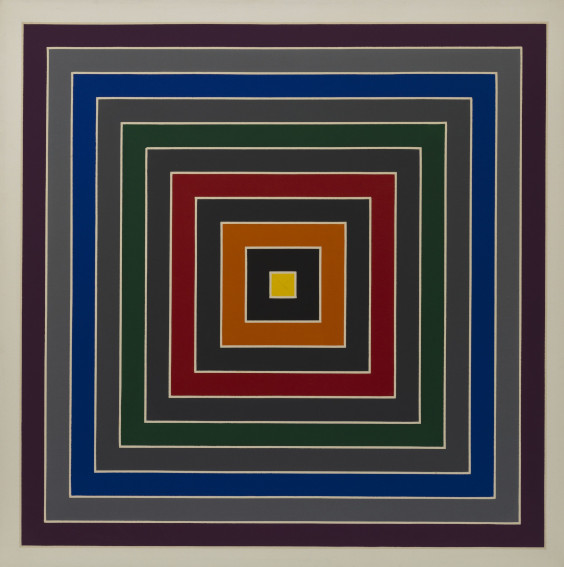
Frank Stella - Gray Scramble, 1968-69. Oil on canvas. 175.3 x 175.3 cm. Solomon R. Guggenheim Foundation, New York, Hannelore B. and Rudolph B. Schulhof Collection, bequest of Hannelore B. Schulhof, 2012. © Frank Stella, by SIAE 2019
Towards Minimalism and Spirituality
As artists in Europe and the United States moved beyond the emotional tendencies of Abstract Expressionism, Art Informel, and Art Brut, the Schulhofs followed the same trend, collecting the works of conceptual artists, Minimalists, and even photographers. They developed an interest in line, collecting works by Brice Marden and Hans Hartung; they found tranquility in minimal sculpture, collecting the works of Eduardo Chillida and Carl Andre; and they developed a profound interest in the works of Agnes Martin, and even visited her in her home in New Mexico. Their interest in conceptual art and seriality found expression in the works of Bernd and Hilla Becher, whose “typologies” offered insight into the underlying structures and repetitive formal languages of the Modern built world. They also collected works by Andy Warhol, showing their willingness, despite the other works in their collection, to consider the notion that originality is a myth.
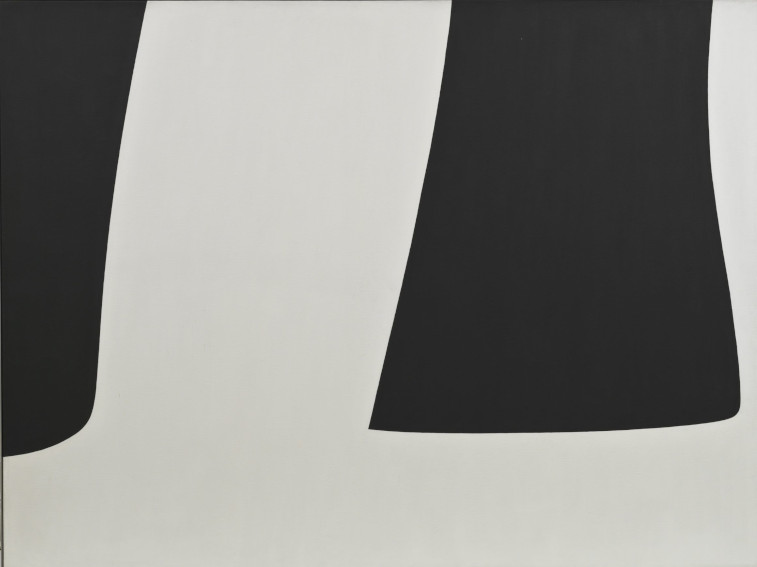
Ellsworth Kelly - 42nd, 1958. Oil on canvas. 153.7 x 203.2 cm. Solomon R. Guggenheim Foundation, New York, Hannelore B. and Rudolph B. Schulhof Collection, bequest of Hannelore B. Schulhof, 2012. © Ellsworth Kelly
One of the most endearing aspects of the Schulhof collection is that it is not short on whimsy and simplicity. The Schulhofs owned works by Alexander Calder, Ellsworth Kelly, and Giuseppe Capogrossi, three artists whose works are as conceptually profound as they are childlike in their innocence. They also collected works by Morris Louis, Kenneth Noland, Frank Stella, and Donald Judd, expressing an avid interest in the notion of purity, and in the value of paring the aesthetic languages of Modernism down to their most essential elements. The current Guggenheim Venice exhibition arranges each significant area of the Schulhof collection into a sensible timeline, showing exactly how they assembled the collection so we can see for ourselves how their eye evolved with the times. It is indeed a remarkable journey through recent art history. And yet the most important takeaway may be something simpler: the reminder of the enduring importance of collecting the art of living artists. How else can the story of the evolution of human culture during our time be told?
Featured image: Cy Twombly - Untitled, 1967. Oil-based house paint and wax crayon on canvas. 127 x 170.2 cm. Solomon R. Guggenheim Foundation, New York, Hannelore B. and Rudolph B. Schulhof Collection, bequest of Hannelore B. Schulhof, 2012. © Cy Twombly Foundation
All images used for illustrative purposes only
By Phillip Barcio
